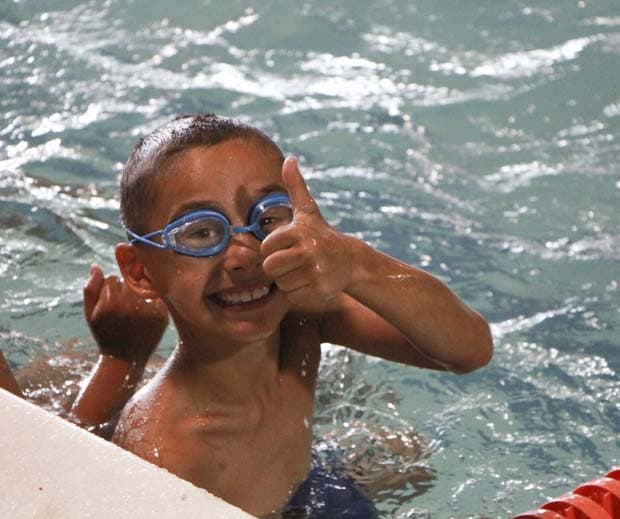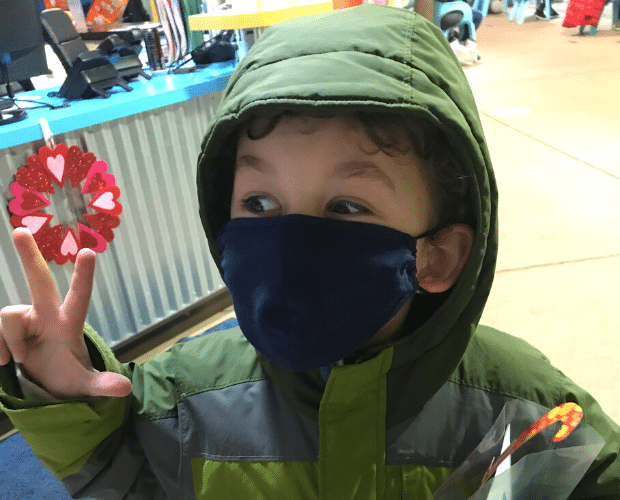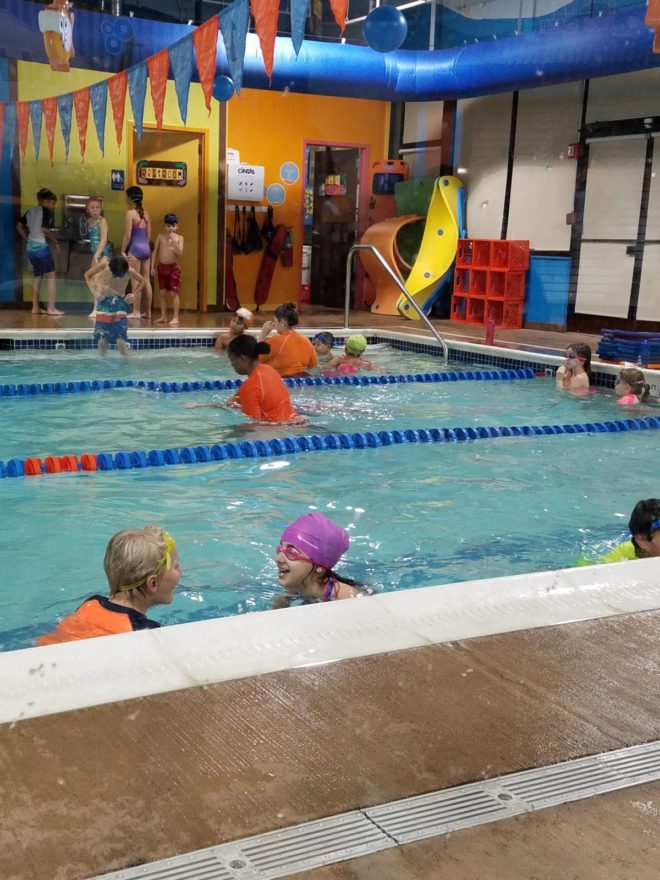My family is Learning to Swim in Winter at the Goldfish Swim School in Mundelein in exchange for social media coverage.
During the summer months, many people have their mind on swimming and getting in the water. It’s warm and everyone loves getting in the pool to cool down. The same is not true for winter, and that’s likely why many people don’t think about taking swimming lessons in winter, but they should. This is especially true for kids and new swimmers.

Maintaining swimming lessons in winter is a great way for kids to stay healthy, to keep their swimming skills up, and it’s also a great way to get the kids out of the house and avoid some wintertime cabin fever!
10 Things to Keep in Mind While Learning to Swim in Winter
Before you sign your kids up, here are 10 things to keep in mind while learning to swim in winter.

- Swimming lessons during the winter months is a great cure for cabin fever. Wintertime is dark and cold and it is easy to just curl up and do nothing more than hanging out on the couch watching TV for those months. That gets pretty depressing after a while, which is why hitting the pool and moving your body is a great idea for people of all ages.
- Wintertime is the time for cold and flu season. It also helps to boost your immune system. Swimming lessons in winter are a great way to build up immunity and fight off illness.
- Knowing how to swim is important all the time, wintertime included. That’s why taking these lessons during the off season is never a bad idea.
- Swimming helps to build muscle, which leads to improved balance and health.
- Each year in the United States 350 children under the age of 5 die by drowning. Giving kids the benefit of knowing how to swim can no doubt prevent some of these tragedies.
- Regular exercise such as swimming is good for improving sleep habits of kids.
- Swimming lessons in winter are often less crowded then those the rest of the year. That means that your child will get more one on one attention.
- With the cold winter air, it is important to remember to bring layering clothing to keep warm on those walks from the pool to the car after lessons.
- The influx of swimmers in the warmer months means that the pool filtration system is put under a heavy load. Swim school often drain and clean pools completely during the fall season. That means that the pool is cleaned and sanitized to a higher degree than it is during the warmer months.
- In addition to the overloaded pool filtration system, pool employees use more chlorine to make up for the influx of people. While they do keep the chemicals at the appropriate levels to keep the pool safe, the pool appears cloudy and smells heavily of chlorine.

What Should You Not Do Before Swimming?
Before taking your kids to swim class, it’s important to remember to prepare. It isn’t safe to just jump in and swim. Like with any other exercise, swimmers need to warm up and stretch before the class. Swimming is an exercise that utilizes all of the muscles in the body. And guess what? Those muscles need a warm up to avoid injuries. Even if you don’t injure yourself, your muscles will potentially hurt for days.

Are you looking for more information on why your kids should take swimming classes in winter? Check out this post!


